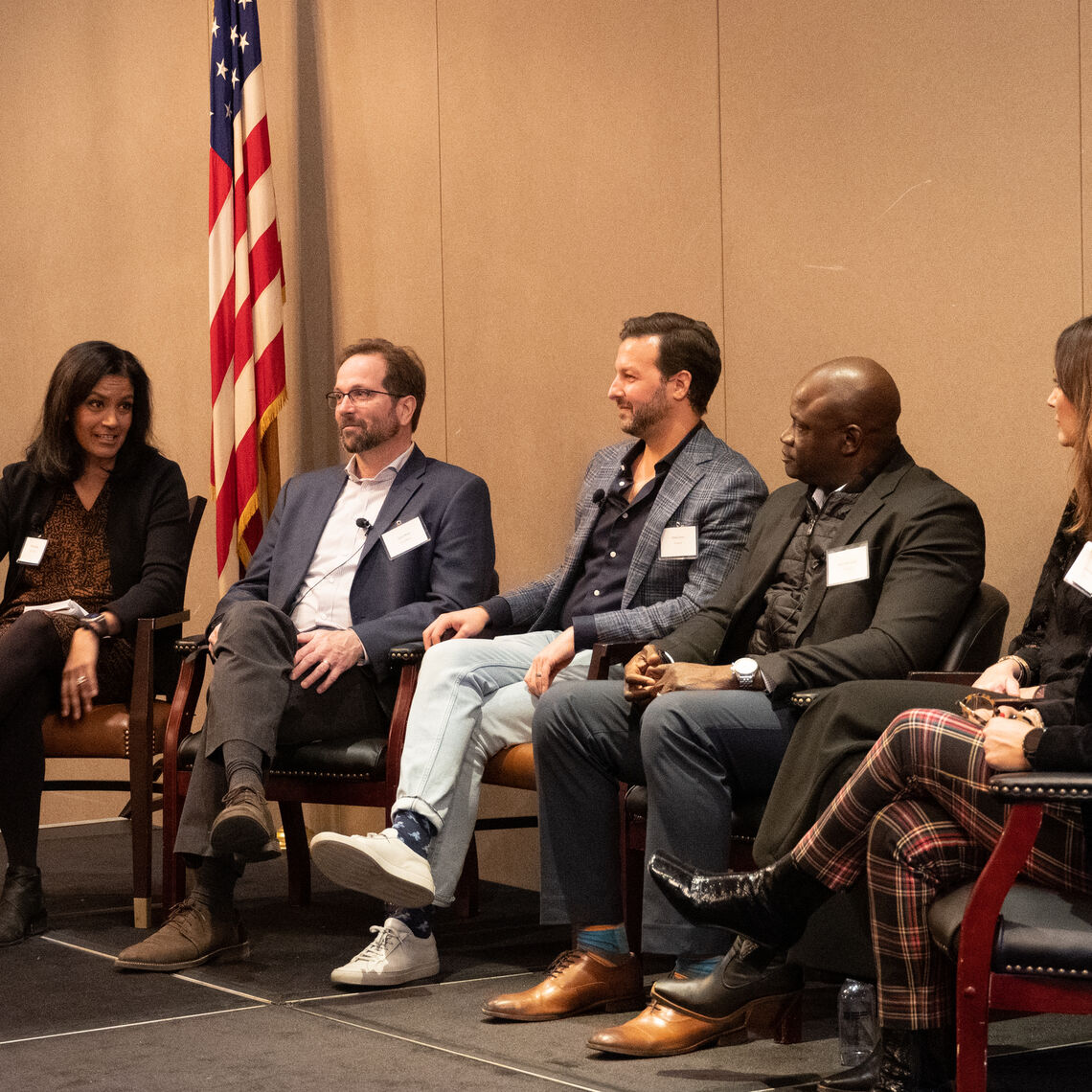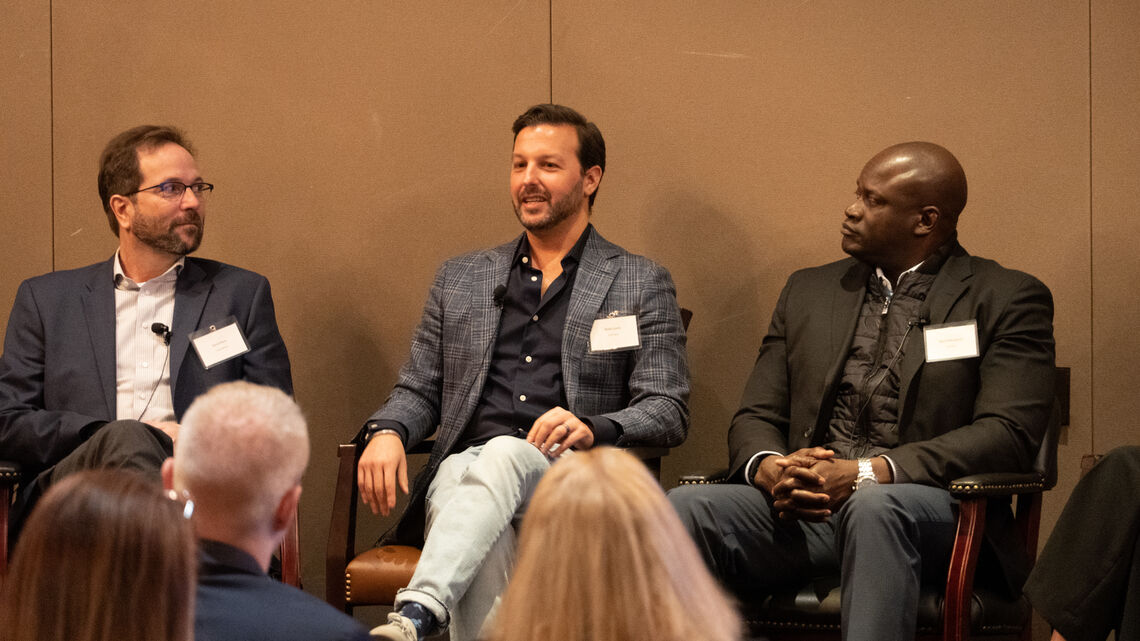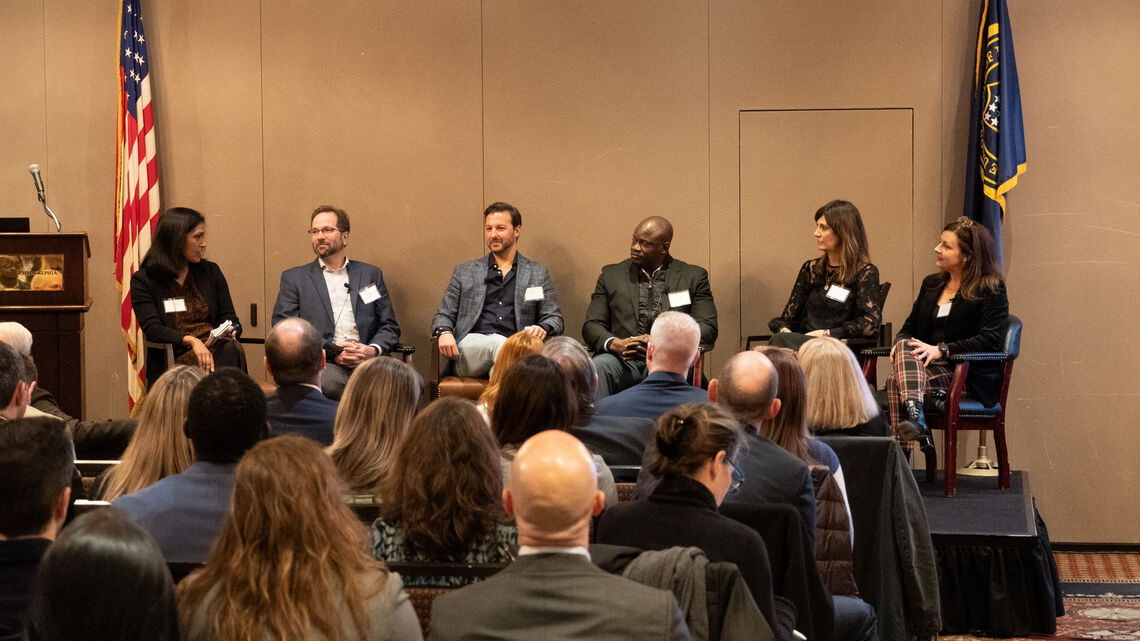
blog
The Future of the Office District: A Recap of the CPDC December 2022 Meeting
The death of the office sector has been greatly exaggerated. While the last three years have profoundly disrupted the state-of-work in downtowns across the nation, as the rebound continues, questions remain. What form should office space take in the future? How should employers balance the interest in remote work with the benefits of in-person collaboration?
Those are just a few of the questions discussed as the Central Philadelphia Development Corporation (CPDC) hosted their quarterly membership meeting. Starting with a presentation from Center City District CEO Paul Levy, the panel featured local and national real estate, architecture, and business experts, including:
- David Moos, Principal of CosciaMoos Architecture, a Philadelphia-based architecture firm;
- Linda Pileggi, Design Director at Gensler, an international architecture, design, and planning firm;
- Kimberly Smith, Vice President Workforce Strategy at JLL, a Fortune 500 national real estate and investment firm;
- Reed Lyons, Vice President Campus Operations at Comcast, a Fortune 500 national telecommunications and media headquartered in Philadelphia that recently made headlines for their return to office; and
- Wale Mabogunje, Vice President – Project Executive at Parkway Corporation, a Philadelphia-based real estate developer, involved with the new headquarters of both Morgan Lewis and Chubb.
Read along for several key themes from the discussion, and learn how you can join CPDC to get access to these exclusive conversations.
Understanding Your Workforce
A fundamental part of office culture has always been the ability of employees to come together in the same space at the same time. That foundation, at its most effective, nurtures relationships that drive successful businesses forward, including education both about job specifics and broader company culture, mentorship, collaboration, and innovation. From private spaces, like offices or cubicles, to shared communal spaces, like lunch tables and water coolers, office spaces historically have brought people together, helped generate new ideas and create community in the workplace.

But with the sudden, unplanned shift to remote work, and the discovery that many tasks can be performed from remote settings, new discussions around the nature of the workplace emerged — including whether physical offices were necessary at all.
To address this issue, the panelists said it is critical for businesses to first understand what they want to achieve within their offices and why their employees want to work from home. Is it about avoiding a commute, or foregoing business attire? Or are there deeper reasons, such as the cost of childcare, work-life balance, or the need for more compelling workspaces?
To inspire the “return to office,” the panelists unanimously agreed on two points. First: there is no one-size-fits-all approach. Each business will have different needs, distinct cultures, and unique approaches, all of which can depend on factors including the company’s size and the industry sector.
Secondly, for a return-to-office plan to work, company leaders must create an example for their employees to follow. When working with a pharmaceutical firm, Smith asked the leadership for an in-person meeting, which they declined because they were all working remotely. “How are we going to inspire your actual employees to get there if you're not going?… You have to model the behavior you want to see.”

Considering Flexibility for Hybrid Work
When you receive a meeting invitation, how often do you check if it is in person or virtual?
Even with the return to office, the possibility of remote work will likely remain for the foreseeable future, meaning that it needs to be included as part of office planning. As one panelist noted, even if only one person is joining via phone or video platform, the meeting is now a hybrid meeting, and the dynamic will shift.
But what is key is finding the right balance between remote and in person. As Moos noted, there are times when you have personal obligations that require you to work from home, "or you've got some heads down and tasks that you really need quiet. But generally speaking across the board, the more you're in the office, the better it is for everyone.”
Making the Office a Destination, Not an Obligation
The potential that hybrid work is here to stay means that companies looking to get workers back to the office must create spaces where their employees want to be.
When creating these spaces, a key question is: who will be using it? In the past, designers "used to design for department needs, assuming that the whole department works the same,” Pileggi noted. “That's not the case anymore. We're all different. We're all individuals. And what I need to do in the day may be very different from what [others] need.”
This flexibility in designs will look different between departments and individuals, situation to situation. Mabogunje noted that while private offices are the long-held standard at law firms, other businesses with open floor plans may find that some secluded spaces can provide benefits for workers at all levels who may need to make private calls or who simply prefer the quiet of an at-home office.

In Pileggi’s view, there’s an opportunity – and even a need – for experimentation: “To experiment, you can take a smaller space within a larger footprint, and say, ‘we're going to take this space, and we're going to experiment with new ways of working.” Lyons added: “It's not always ‘you’ve got to knock down every wall … .’ There's interior outfitting that can be creative. It could be more cost effective for some of our smaller businesses who really don't have the budget to do capital projects all day long… we’ve got to be creative and help meet people where they're at.”
Looking to the future, this idea of the office should continue to evolve. Whether adding amenities inside office buildings, or activating outdoor office plazas with art, entertainment and pop-up vendors, that’s what businesses need to start considering: creating environments that will make people want to return to the office and to the downtown to foster a more humane and balanced approach to nurturing talent.


Join Us For Future Discussions Around Center City
Interested in hearing the perspectives of other business leaders? Learn how you can become a member of the CPDC and attend our exclusive panel discussions.